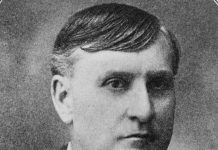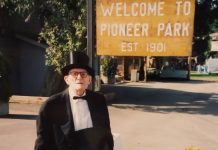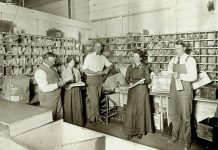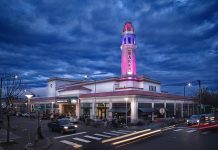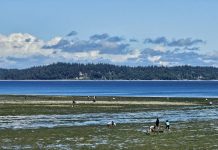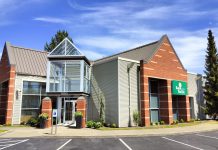Albert Mead was Washington’s fifth governor and lived in Whatcom County. Serving from 1905 to 1909, the Bellingham lawyer and former Blaine mayor was a reformer. Many of the laws he advocated for continue to make Washington a better place today.
Sunflower State Lawyer
Albert Edward Mead was born on December 14, 1861, in Manhattan, Kansas, to William Banks Mead (1833-1911) and Harriet Carlton Mead (1828-1867). Mead’s mother died in childbirth when he was six. Baby Hattie survived only four months.
The grieving family moved to Iowa, where William operated a hotel. Young Mead started attending court trials for fun.
Working vacations as a watchman at the Illinois Hospital for the Insane (his father was superintendent), he attended Southern Illinois Normal School. Mead taught for a year near the town of Anna before entering Chicago’s Union College of Law.
Graduating in 1885, he made his way to Leoti, Kansas, where he opened a law office. Business was slow, so Mead also dug wells and published the Leoti Lance newspaper.
He married Elizabeth “Lizzie” Pauline Brown (1864-1898) in October 1887. They would welcome four children: Mary Alice (1888-1949), Wendell Phillips (1891-1952), Rollin Carlton (1893-1976), and Damon (1896-1976). After Lizzie’s death, Mead married childhood friend Mina Jane Hosmer (1860-1941) in 1899. They had one child, Albert Vincent (1900-1955).

Mead Comes to Washington
Opportunity beckoned in the West. The family moved to Washington in 1889, just months before the state’s admission to the Union. After a short stay in Bellingham, they went to Blaine, where Mead opened a law office.
He was elected mayor of Blaine in 1892, serving one term. That same year, Mead was also elected to the State House of Representatives, where he served another single term. He chaired the House Judiciary Committee, which selected the state’s senator to Congress. Senators were chosen by state legislatures before 1913.
The Meads moved to Bellingham after he was elected Whatcom County prosecuting attorney in 1898. He was reelected the following year.
Mead, Who?
Mead was under consideration for nomination as Whatcom County superior court judge when the Republican party convention was held in 1904. But Mead had a different ambition: governor.
It should have been impossible. Current Governor Henry McBride would have been the logical candidate, but his nomination was blocked by the powerful railroad lobby, whom he had alienated.
The party then selected its nominee at a convention rather than through a primary election. With the support of the Whatcom County delegates, he was chosen over better-known, more popular candidates. Many were surprised, but Mead had a solid reputation as an affable, honest, and straightforward man with a clean political record.
Bellingham welcomed Mead back from the convention with a procession. Flags flew everywhere. Mead won the whirlwind campaign, defeating Democratic candidate George Turner with 51% of the vote.
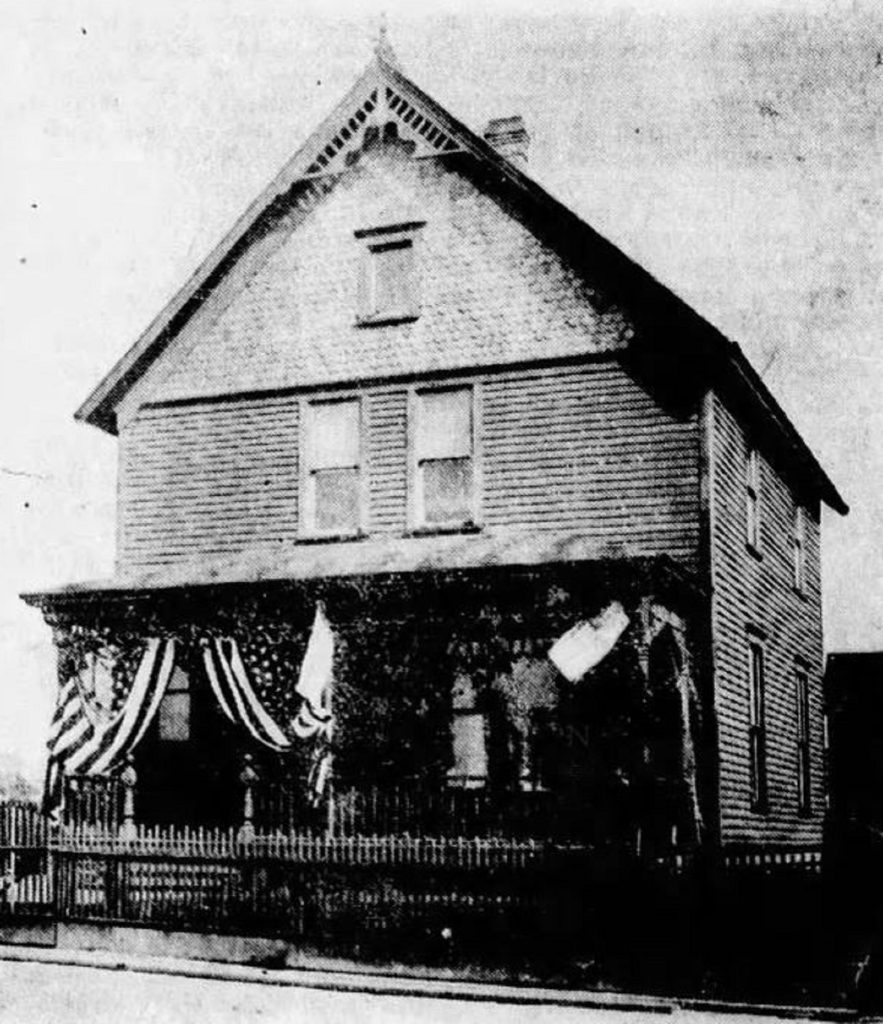
Hello Governor Mead
Mead was sworn in before the start of a legislative session in January 1905. During the ceremony, the new (now “Old”) State Capitol was also dedicated.
An ally of the Progressive Movement, Mead advocated for many of the reforms that the movement had been lobbying for. During the 1905 legislative session, he successfully pushed for the creation of a state railroad commission and a state tax commission. To meet people’s demands for better roads, the office of the State Highway Commissioner was established. That year, Mead also vetoed a bill that would have put the location of the capital up to popular vote again. The matter, he declared, had already been settled. It was the last serious attempt to move the capital from Olympia.
When the legislature reconvened in 1907, Mead’s ideas were met with mixed success. While the legislature did not approve establishing the initiative and referendum, they did vote for direct primary elections.
Mead struggled with his worst crisis later that year as the Panic of 1907 gripped the nation. Banks began to close, wiping out many people’s hard-earned savings. To combat the situation, Mead declared a two-day bank holiday in October to help banks (and depositors). It proved very unpopular.
Ironically, the new primary law that Mead passed led to his defeat. Competing against 12 other candidates, Mead came in a narrow second to fellow Republican Samuel Cosgrove. Mead graciously conceded the primary. Cosgrove would win the general election, but he died shortly after taking office.
The Meads moved to Olympia during his term as governor, renting a house. It proved too small for the large family, and when important guests stayed, the children were sometimes sent to stay with neighbors. The Governor’s Mansion was built during Mead’s administration, but was not completed in time for them to move in.
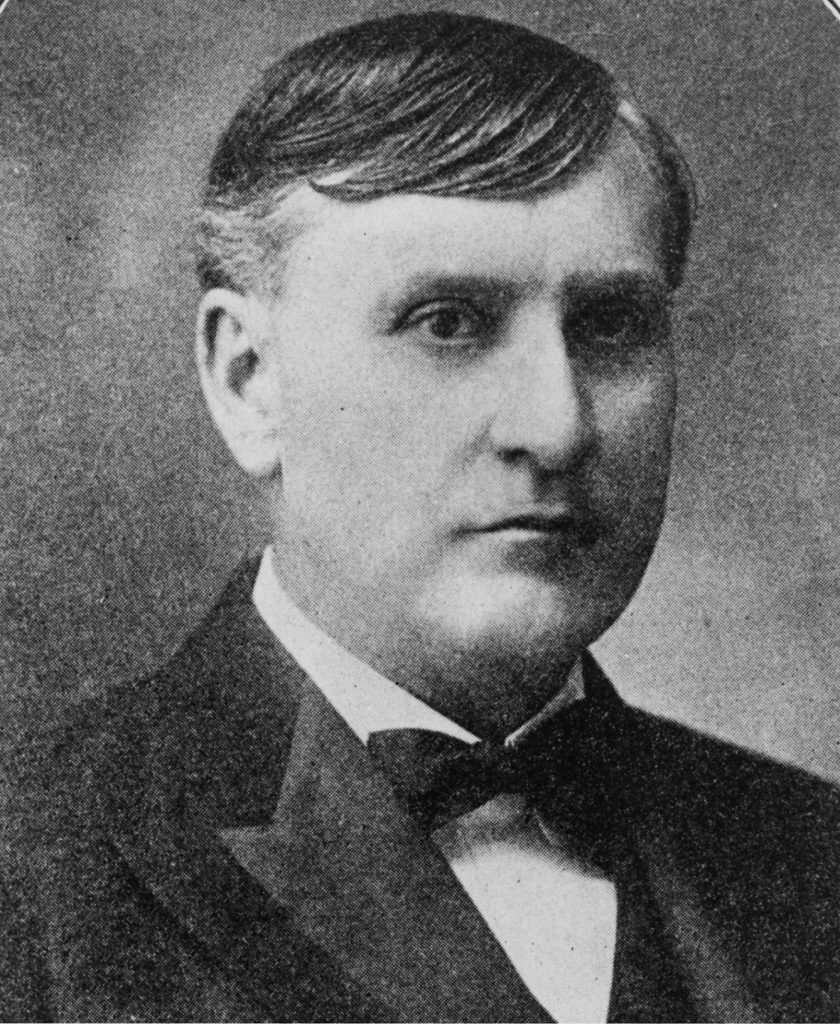
Mead Goes Back to Bellingham
After leaving office, Mead returned to Bellingham to practice law. A frequent speaker on many topics, he became very active with YMCA fundraisers and the Chamber of Commerce. He was elected president of the Chamber in 1911 and unanimously reelected the following December.
In 1913, Mead contracted a severe case of the flu. His doctors discovered he had a damaged heart valve, made worse by his illness. Refusing to rest, he resumed a limited work schedule. He died at his home (2311 J Street) on March 19, 1913. He was 51.
Over 2,000 attended his funeral at Trinity Methodist Episcopal Church. Current governor Ernest Lister spoke.
Albert Mead is not one of Washington’s most famous governors. While many of the reforms he advocated for were not passed during his tenure, he left a lasting legacy of improved government. “What Governor Mead did for his state,” the Bellingham Herald wrote shortly after his death in 1913, “shall not be forgotten.” Nor should it.






